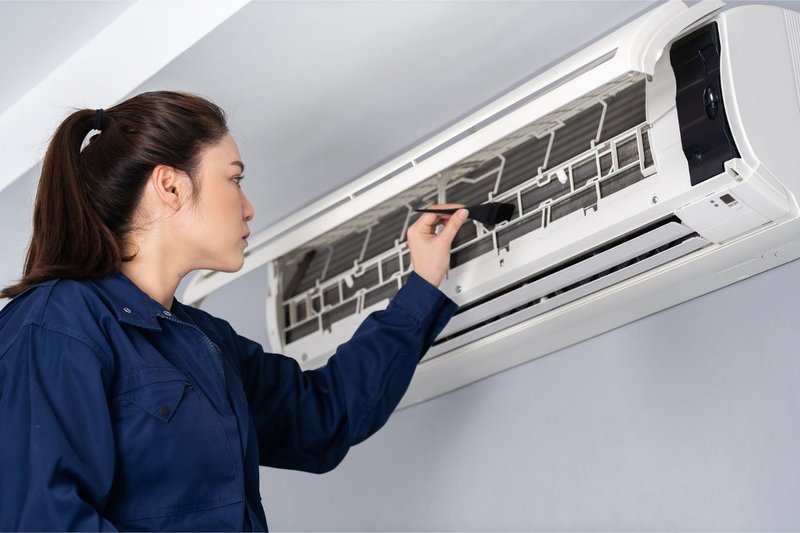
Dealing with technical terms and error codes can be a bit like deciphering a secret language. But don’t worry, I’m here to break it down for you. Error codes are like your AC’s way of sending an SOS. The “OE” you’re seeing is a specific signal that something’s amiss in the unit’s operation. While it might sound a bit intimidating, this code is designed to pinpoint specific issues, so we know where to start troubleshooting. Let’s dive deeper so you feel confident in knowing when to bring in the experts.
Understanding What Error Code OE Means
First things first, what exactly is error code “OE”? In the realm of GE air conditioners, the OE error code typically points to an issue with the unit’s water drainage system. Air conditioners pull moisture from the air, and this moisture has to go somewhere—usually into a condensate pan or through a drain pipe. If this system is backed up, your unit could stop working properly, raising the OE error.
Think of it like your kitchen sink. If you’re washing dishes and the drain is clogged, water can’t pass through, and you end up with a messy spillover. Similarly, when your AC’s drainage is blocked, the unit can’t function efficiently and alerts you with the OE code. If this error is left unchecked, it could lead to water leaks or even damage to the internal components of the AC, similar to how a clogged sink could eventually lead to a flooding kitchen.
If you’re seeing this error, it might be time to roll up your sleeves and check if you can manage it on your own. Sometimes, a simple cleaning of the drain pipe or pan could do the trick. However, before you decide to tackle it yourself, it’s crucial to understand the system’s mechanics to avoid any unintended damage.
When Should You Try DIY Solutions?
Before jumping on the phone with a technician, there are a few things you can try yourself. For the adventurous, cleaning the drain or condensate pan might sound doable. But how do you know if it’s safe for you to try these fixes? Generally, if you’re comfortable using basic tools and have a good troubleshooting guide from your unit’s manual, giving it a shot could save you time and money.
To start, unplug the unit to ensure it’s safe to work on, much like how you’d unplug your toaster before fishing out a stuck toast. Once powered down, check the drain hose or pan for any visible blockages. It’s not unlike cleaning out a vacuum cleaner when it’s not sucking properly. Clear any debris and ensure the passageway is open.
However, if you start feeling like you’re venturing into uncharted territory—say, if accessing these parts requires a toolkit you don’t own or skills you haven’t got—then it’s better safe than sorry. At times, an error could be due to other underlying issues that aren’t as straightforward as they seem, such as underlying mechanical failures.
Signs It’s Time to Call a Technician
So, when is it really time to call in the cavalry? If you’ve tried the basic fixes, and your unit is still displaying that pesky OE code, that’s a strong hint that a deeper issue may be at play. Technicians have the expertise to diagnose and fix complex problems that aren’t immediately visible. They can spot things that might fly under your radar, like faulty sensors or complicated electrical issues.
Calling a technician might seem like an admission of defeat, but think of it as calling in an expert. It’s like having a doctor who knows exactly what medicine to prescribe when you’ve got a stubborn cold. They have special tools and knowledge, ensuring problems are resolved without trial and error, and importantly, safely.
Another reason to call a technician is if your AC unit is under warranty. Attempting repairs on your own can sometimes void this warranty, leading to avoidable expenses if professional intervention becomes necessary. Remember, a guaranteed repair often outweighs the cost of a potential mishap.
Preventative Measures to Avoid Future Issues
Getting ahead of issues is always better than dealing with urgent repairs. Much like regular oil changes for your car, routine maintenance for your air conditioner can prevent many common problems. Here’s how you can keep your AC in top shape and potentially avoid seeing that OE code pop up altogether.
Regular cleaning is at the top of the list. Ensure the filters, coils, and fins are regularly cleaned and free from dust and debris. It functions like a well-tuned engine that doesn’t choke when dust-laden. A clean unit not only runs efficiently but also uses less energy, saving you money on those utility bills.
Scheduling regular check-ups with a professional, even when everything seems fine, can keep your air conditioner in good health. It’s similar to having a yearly check-up with your doctor; small issues can be caught early before they become significant problems. These preventative measures can also improve the air quality in your home, ensuring that every breath you take is fresh and healthy.
Finally, understand that while DIY fixes can be tempting, they should only be attempted if absolutely sure. Otherwise, rely on a professional to maintain the longevity of your GE air conditioner. Following these steps can help ensure that your cooling experience is worry-free and that your home remains your cool, comfortable refuge all summer long.